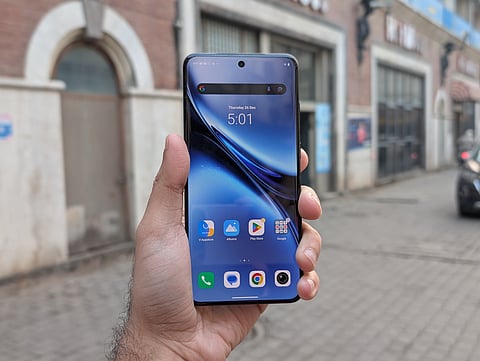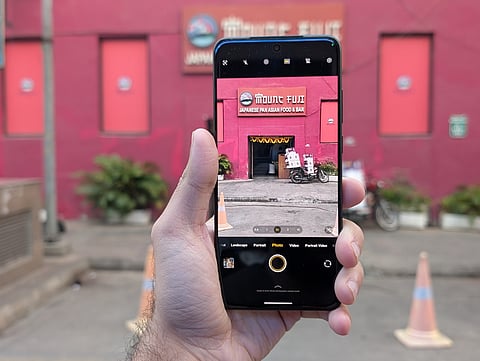When I started using the Vivo X200 smartphone, I was somewhat jealous of those with the X200 Pro and its superior telephoto camera. After a few weeks of using the “value-for-money” sibling, I was bowled over. The Vivo X200 has held its own and has emerged as one of the best Android smartphones for 2024.
Vivo X200 Review: The Exceptional Cameras Make This the Absolute Best Value-For-Money Android Smartphone of 2024
If it weren’t obvious, the Vivo X200 might steal the crown as the smartphone to beat in 2024 and even the first few months of 2025. Combine the stunning and fluid AMOLED display with the IP68 + IP 69 rating and an optimised Funtouch OS 15, and you’ve got a winning package
If I sum up this review (yes, before I get into the nitty gritty) in one sentence, it would be this: Buy the smartphone, open the camera, take some photos, and see the results. That’s it. That’s what I would say. The OS may not be the smoothest or fastest out there. The smartphone may not be the best for gaming. The battery life may not last the longest. Even the display may not be the brightest. But those cameras, you ask? They are the absolute best.
The vivo X200 is 8mm thick and weighs just 200 grams. It’s a lightweight smartphone that is sure to surprise you. While writing this review, I discovered a friend on one of my WhatsApp groups was sending photos from the vivo X200 Pro. He’s delighted with the smartphone, and it goes to say—enough of the introduction.
Let’s dive in.

Design & Display
For the X200, vivo chose a 6.67-inch display (down from a 6.78-inch display on the vivo X100). Although thinner, the in-hand feel is similar since it isn’t much narrower or lighter. It doesn’t bog you down, and the weight distribution is solid.
There is a noticeable camera bump (with Zeiss branding) and a flash in the top-right corner. A metal Sunburst Ring surrounds and protects the camera bump. The sunburst ring on the sides and a silver ring around the camera bump make it look premium. The volume and power buttons are on the right-hand side.
The display is one of the stars of the show here. It’s a quad-curved design (with a Zeiss Master Color Screen. It is an OLED panel (1,260x2,800 resolution) with a 20:9 aspect ratio. It’s got a 120Hz refresh rate. The panel can reach 4,500 nits of peak brightness. There’s a fingerprint reader, which is optical, rather than the Pro model’s ultrasonic fingerprint reader.
The 1.5K AMOLED screen is bright and vivid. It’s got 2,160Hz PWD dimming to keep your eyes safe. It’s very much useable in the bright outdoor sunlight. The edges of the display are now flat, and the bezels of the display curve down right to the midframe. The fibreglass back plate is less pronounced and curved but still exudes every inch of premiumness.
Performance: MediaTek Power!
The vivo X100 is among the first smartphones to use the new MediaTek Dimensity 9400 5G SoC. This chipset significantly improves gaming and AI performance. With 16GB of RAM (and an extra 16GB of virtual RAM) and 512GB of storage, the smartphone effortlessly handles daily tasks.
Apps launch instantly, and the device is fluid when multitasking. In my testing, I never noticed a lag or a stutter that would be a dealbreaker. Yes, some apps launched slightly slower than others, but that’s standard procedure for most smartphones.
The 9400 SoC is built on a 3nmm process. Its USP is its performance and efficiency, and it shows. Multitasking is fluid, and watching 4K videos is a delight. The phone doesn’t get too warm at any point.
Even when gaming - on various games such as CoD: Mobile - the smartphone doesn’t heat up. It gets warm, but ever so slightly. Gaming may not be the smoothest experience (please checkout the ROG line of smartphones), but it’s suitable for casual users like me.

Software: A smooth software experience
The vivo X200 comes out of the box with FunTouch OS 15 (based on Android 15). It’s a custom Android skin with many customisation options and themes. There are various AI-powered features, such as AI Notes or Circle to Search.
I used to dislike Funtouch, but it has improved significantly year over year. It’s clean, optimised, and makes the most of the smartphone's hardware. It also feels a lot lighter than other Android skins. It may feel a lot like iOS, but at this point, we’ve all gotten used to it.
I won’t delve deep into the software, as I have very few negatives. There is one sour point, though: bloatware. It is much less than in previous iterations but still present. The quick settings panel also no longer has a split view. Jovi, a personal AI assistant from vivo, cannot be removed.
Cameras: The hero of the smartphone
The triple rear camera setup truly shines bright. It has a 50MP primary sensor, a 50MP telephoto lens (with 3x optical zoom), and a 50MP ultrawide lens. There’s no wasted space here, and they all deliver impressive results. The primary sensor is the best of the lot, with great details, vibrant colours, and exceptional dynamic range. The resulting photos are true to the eye.
The primary sensor shines regardless of the lighting conditions. I took many more photos in low light because the larger sensor absorbed more light, retaining as much detail as possible and causing little noise.
Another thing I loved to click with the vivo X200 was landscape photos. For that, the ultrawide lens came in handy. There’s consistent colour accuracy among the lenses, which I found to be a significant upgrade from previous devices. The landscapes came as close to what the eye sees as possible.
But my favourite thing to do with high-end smartphones is to click dozens of portrait shots. And the vivo X200 (barring the X200 Pro) is the best smartphone for this job. Every quiz night, every party, every picnic, every game of bowling, every new restaurant or bar, just about anything and everything. When I’m out and about, I click portraits.
When you enter portrait mode, you’re greeted with many focal lengths—23mm, 35mm, 50mm, 85mm, and 100mm—from which to choose. The 50mm and 85mm are my favourites for capturing those sharp and creamy bokeh photos of my friends.
There are also several Zeiss-tuned effects, such as Natural, Biotar, B-Speed, Sonnar, Planar, Distagon, Cine-Flare and Cinematic, for you to choose from. You can make your portrait shot as dramatic as you want.
As I mentioned initially, I envy those with the X200 Pro’s superior telephoto lens. Nonetheless, the X200 has a 50MP (f/2.57) telemacro OIS camera. It’s a Sony IMX882 sensor (1/1.95-inch) with 3x optical zoom. Zooming into objects or buildings with minimal loss of details is an everyday pleasure. This lens also supports macro photography, in case you’re into that. Selfies are acceptable, but they are nothing to write home about. They’ll suffice for your social media posts, but that’s about it.
Speakers: one area that is lacking
The speakers are decent enough and can get loud, but raising the volume above 70 percent causes a lot of noise and loss of details. It’s decent enough for when you’re watching sports, but I wouldn’t use it to watch a two-hour movie.
Battery and charging
I was impressed with the X200’s battery life. The X200 comes with a massive 5,800mAh capacity battery (16 percent more than its predecessor), and with the more efficient MediaTek chip, the smartphone lasts a long time on a single charge. If I wasn’t pushing it to the limits, I could easily get one and a half days before finding a wall socket to plug the smartphone into. All this in a slim smartphone? The vivo X200 uses a Lion battery with a 3rd-Gen Silicon anode and a semi-solid state technology to cram a larger capacity into a thinner chassis.
Verdict: Just buy the smartphone
If it weren’t obvious, the Vivo X200 might steal the crown as the smartphone to beat in 2024 and even the first few months of 2025. Its bigger sibling, the X200 Pro, has few differences, and only the superior telephoto lens is to be missed.
The vivo X200 is an all-rounder of a smartphone. No, I wouldn’t recommend this smartphone if you only want to play games or watch movies. Saying that, let me just tell you the good of the smartphone. The vivo X200 features a superb and sharp display, a fast and efficient MediaTek chip, a larger battery in the same thin and lightweight body, and exceptional cameras that will floor just about anyone.
There is competition in the Oppo Find X8 Series (which is also fantastic in its own right) and the upcoming OnePlus 13 Series. Vivo has done well with aggressively pricing the X200 (as opposed to the X200 Pro) and positioning it well in the crowded market.
Combine the stunning and fluid AMOLED display with the IP68 + IP 69 rating and an optimised Funtouch OS 15, and you’ve got a winning package.